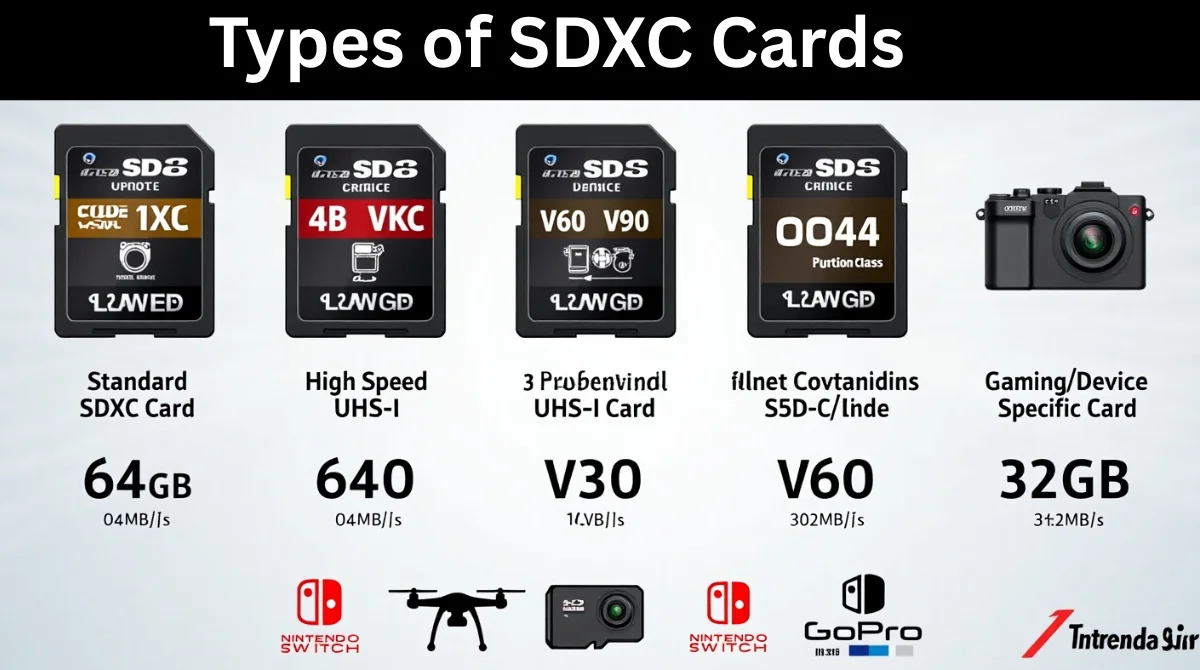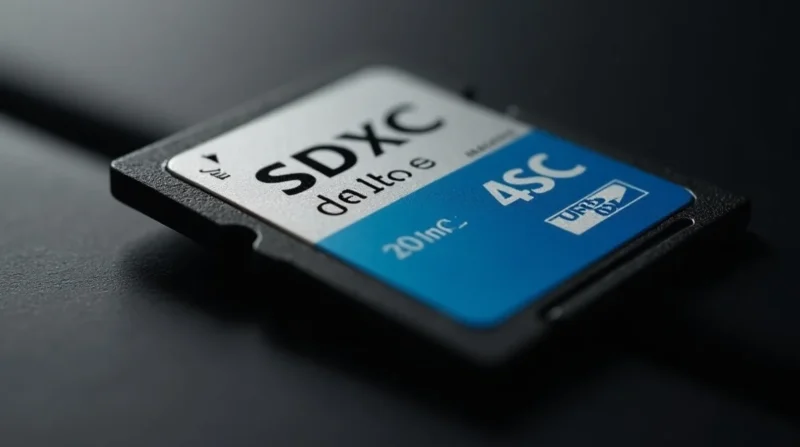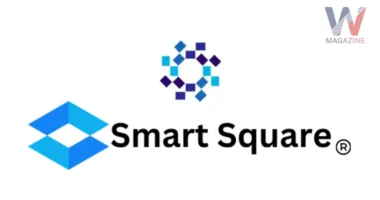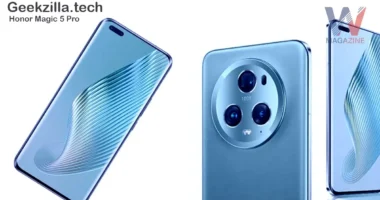Table of Contents
In today’s digital age, storage solutions have become essential for managing our growing collection of photos, videos, and files. Among the various options available, SDXC (Secure Digital eXtended Capacity) memory cards stand out for their high capacity and speed. This guide will walk you through everything you need to know about SDXC cards, using simple language to ensure clarity.
What is an SDXC Card?
An SDXC card is a type of memory card that offers large storage capacities, ranging from 64GB up to 2TB. Introduced in 2009, SDXC cards were designed to meet the increasing demand for higher storage in devices like digital cameras, camcorders, and smartphones. They use the exFAT file system, which allows for storing large files, making them ideal for high-definition video recording and high-resolution photography.
Key Features
1. High Storage Capacity
SDXC cards offer a huge amount of storage space, starting at 64GB and going all the way up to 2TB. This is ideal for people who take a lot of high-quality photos or record long HD or even 4K videos. For example, if you’re on vacation and taking hundreds of pictures and videos every day, an SDXC card can store it all without running out of space. According to Lexar, one of the top memory card brands, this massive capacity is one of the main reasons people choose SDXC cards over standard SD or SDHC cards.
2. Fast Data Transfer Speeds
Another key feature of SDXC cards is how quickly they can read and write data. This speed is crucial when you’re recording high-resolution video or taking multiple photos in quick bursts. Imagine filming a fast-paced sports game or a wedding ceremony your camera needs a card that can keep up with the action. SDXC cards are made with speed classes like Class 10, UHS-I, and UHS-II, which help you choose the right speed based on what you’re doing. As explained by Onestepguide, these speed ratings help make sure your card won’t slow you down.
3. exFAT File System
Unlike older memory cards that use the FAT32 system, which limits file sizes to 4GB, SDXC cards use a newer format called exFAT. This file system allows you to save files that are larger than 4GB such as a long HD movie or a batch of high-resolution RAW photos. According to Chino Co., Ltd. and Onestepguide, exFAT makes SDXC cards better suited for modern digital needs, especially in professional work like filmmaking or event photography.
4. Compatibility
Even though SDXC cards are widely used today, not all devices can use them. If your camera, laptop, or card reader is a bit older and only supports SD or SDHC, it might not recognize an SDXC card. That’s why it’s important to check your device’s manual or product specs before buying a card. As noted by Sony Camera Central and SanDisk, always make sure your device says it’s “SDXC-compatible.” If it is, you’ll be able to enjoy all the benefits of higher capacity and faster speeds.
Understanding Speed Classes
When you’re using a camera or recording video, the speed of your memory card matters just as much as its storage capacity. That’s where speed classes come in. They tell you how fast the card can write data like saving a photo or video right after it’s captured. According to Lexar, this is especially important for recording smooth, high-quality videos or taking lots of photos quickly.
1. Class 10
This is the most basic speed class still widely used today. A Class 10 SDXC card can write data at a minimum of 10 megabytes per second (10MB/s). That’s fast enough to record Full HD (1080p) videos without lag or interruptions. According to B&H Photo Video, Class 10 cards are great for everyday use, like vacation videos, casual photography, and regular camera work.
2. UHS-I (Ultra High Speed Phase I)
UHS-I cards are a step up. They can write data at speeds of up to 104MB/s. That makes them perfect for more advanced photography like burst shooting, when you press the shutter and the camera takes multiple photos per second. They’re also good for smoother HD video recording. According to Lexar, UHS-I is ideal for people who want better performance without spending too much.
3. UHS-II
If you’re a professional photographer or videographer, this is where you want to be. UHS-II cards can reach speeds up to 312MB/s, which is extremely fast. This level of performance is required when you’re shooting 4K videos, high-speed sports action, or working with large RAW photo files. As Lexar explains, UHS-II cards help your camera perform at its best without delays or buffer time.
Types of SDXC Cards

Not all SDXC cards are the same. While they all fall under the “SDXC” category due to their large storage capacity (64GB to 2TB), they differ in speed, design, and usage level. Depending on what you’re using the card for like casual photography, professional video, or gaming you’ll find different types of SDXC cards available in the market.
Standard SDXC Cards
These are the most basic SDXC cards, usually rated with Class 10 or UHS-I speed classes. They’re great for everyday users who need large storage for:
- HD video recording
- Casual photography
- Storing apps or media on compatible devices
If you’re using a DSLR or a camcorder for regular shoots, a standard SDXC card with UHS-I speed might be all you need.
High-Speed SDXC (UHS-I) Cards
These cards support Ultra High Speed Phase I (UHS-I), which means they can offer speeds up to 104MB/s. They’re ideal for:
- Burst photography (taking many photos in quick succession)
- Recording Full HD or even light 4K video
- Quick transfers between your camera and computer
Many popular brands like Lexar, SanDisk, and Kingston make reliable UHS-I SDXC cards for both casual and semi-professional use.
Professional SDXC (UHS-II) Cards
UHS-II SDXC cards are made for serious content creators. With transfer speeds reaching up to 312MB/s, they’re best suited for:
- 4K and 8K video recording
- High-speed continuous shooting in RAW format
- Drone videography or cinematic film production
They have an extra row of contact pins on the back for faster communication with compatible devices. These cards are more expensive but necessary if you want top performance and reliability.
Video Speed Class SDXC Cards
Some SDXC cards are labeled with V ratings (like V30, V60, V90), which stand for Video Speed Class. These are important for anyone shooting professional video:
- V30: Minimum sustained speed of 30MB/s – suitable for 4K video
- V60 & V90: For high-end 4K and even 8K video – ideal for cinematic production
If you’re a videographer, always check for these labels in addition to UHS markings.
Gaming & Device-Specific SDXC Cards
Some brands release SDXC cards specifically designed for devices like:
- Nintendo Switch (often branded with the logo)
- GoPro action cameras
- Drones and dash cams
These cards are tested and optimized to work smoothly with those devices, so you don’t have to guess if they’re compatible.
Comparing SDXC with Other SD Card Types
There are several types of SD cards available SD (Standard Digital), SDHC (High Capacity), and SDXC (Extended Capacity). They might look the same physically, but they’re quite different when it comes to how much they can store, what file systems they use, and which devices they work with.
Let’s break down the differences in a way that’s easy to understand:
Storage Capacity
- SD (Standard): These are the oldest and smallest in size, offering up to 2GB of space. That’s only enough for a few hundred photos or a short video clip. These are now mostly outdated.
- SDHC (Secure Digital High Capacity): These cards offer between 4GB and 32GB of space. They’re good for everyday use like casual photography or HD video.
- SDXC (Secure Digital Extended Capacity): This is the modern standard. These cards start at 64GB and can go up to 2TB, which is great for 4K video, high-resolution photography, or long projects that need lots of space.
File System
- SD cards usually use FAT16, a basic system with tight limits.
- SDHC cards use FAT32, which is more flexible but can’t store files larger than 4GB.
- SDXC cards use exFAT, a newer file system that allows much larger file sizes, perfect for HD and 4K video files that can be over 10GB in size.
Device Compatibility
- Devices made before 2008–2009 usually support only SD or SDHC cards.
- Devices made after 2010 typically support SDXC cards.
- If your camera, laptop, or media player only supports SD or SDHC, it may not be able to read SDXC cards, even though they look the same. It’s always smart to check your device’s manual or specs.
Choosing the Right SDXC Card
Buying an SDXC card might seem simple, but picking the right one for your needs can make a big difference in performance and reliability. Whether you’re a beginner photographer or a professional videographer, here are some key things to keep in mind:
1. Device Compatibility
First and foremost, check if your device actually supports SDXC cards. Just because an SD card fits into the slot doesn’t mean it will work properly. Devices like cameras, camcorders, or laptops need to be SDXC-compatible to read the card. According to Sony Camera Central, the best way to know is to read your device’s manual or visit the manufacturer’s website. If your device only supports SD or SDHC, it may not recognize SDXC at all.
2. Storage Needs
How much space do you really need?
- If you’re just taking regular photos or short HD videos, 64GB might be enough.
- But if you’re shooting 4K video, time-lapses, or RAW photo files, consider going for 128GB, 256GB, or even 512GB cards.
Lexar suggests choosing a card size that leaves some breathing room running out of space in the middle of a shoot can be frustrating.
3. Speed Requirements
The type of content you’re creating affects the speed class you need:
- Full HD video or general use → Class 10 or UHS-I
- Burst shooting or 4K video → UHS-II or Video Speed Class (like V30 or V60)
As Lexar points out, faster cards prevent lag and reduce buffering, so you don’t miss key moments.
4. Brand Reliability
There are many brands out there, but stick to trusted names like Lexar, SanDisk, Samsung, Kingston, or Sony. These companies are known for making reliable, durable, and fast cards that won’t suddenly fail. Cheap, off-brand cards may save money at first but can cost you your data later.
Caring for Your SDXC Card
Once you’ve bought a quality SDXC card, it’s important to take good care of it. These cards store your valuable memories and work files, so treating them well helps avoid loss or damage.
1. Avoid Physical Damage
SDXC cards may look tough, but they’re delicate inside. Don’t bend, drop, or expose them to extreme heat or cold. Keep them in a plastic case when not in use, especially if you’re traveling or working outdoors.
2. Regular Backups
Cards can fail no matter how good they are. That’s why it’s smart to back up your files regularly, either to a computer, hard drive, or cloud storage. This way, if something happens to the card, your data is still safe.
3. Proper Ejection
Never just yank the card out of your camera or laptop. Always eject it safely using the software option (like “Eject” on Windows or “Unmount” on Mac). Removing it too quickly while files are still being written can lead to data corruption or even permanent damage.
4. Keep It Clean
Dust and dirt can block the metal contact points, making it hard for devices to read your card. Gently wipe the contacts with a soft cloth if they look dirty, and avoid touching them with your fingers.
Conclusion
SDXC memory cards have revolutionized the way we store and manage digital content. With their high capacity and fast data transfer speeds, they cater to both casual users and professionals. By understanding their features and ensuring compatibility with your devices, you can make the most out of your SDXC card.
Whether you’re capturing precious moments or working on professional projects, an SDXC card can be a reliable companion in your digital journey.









